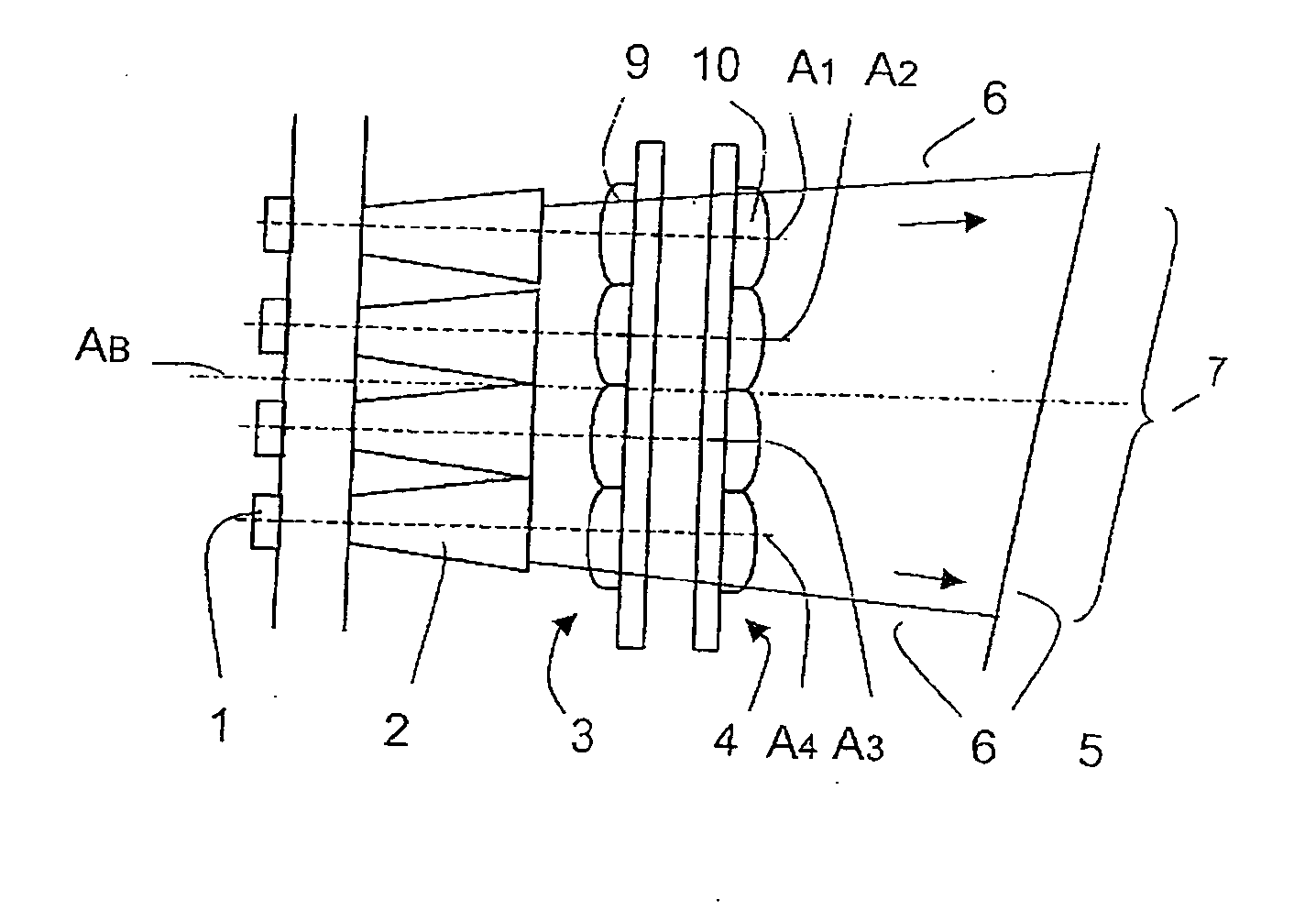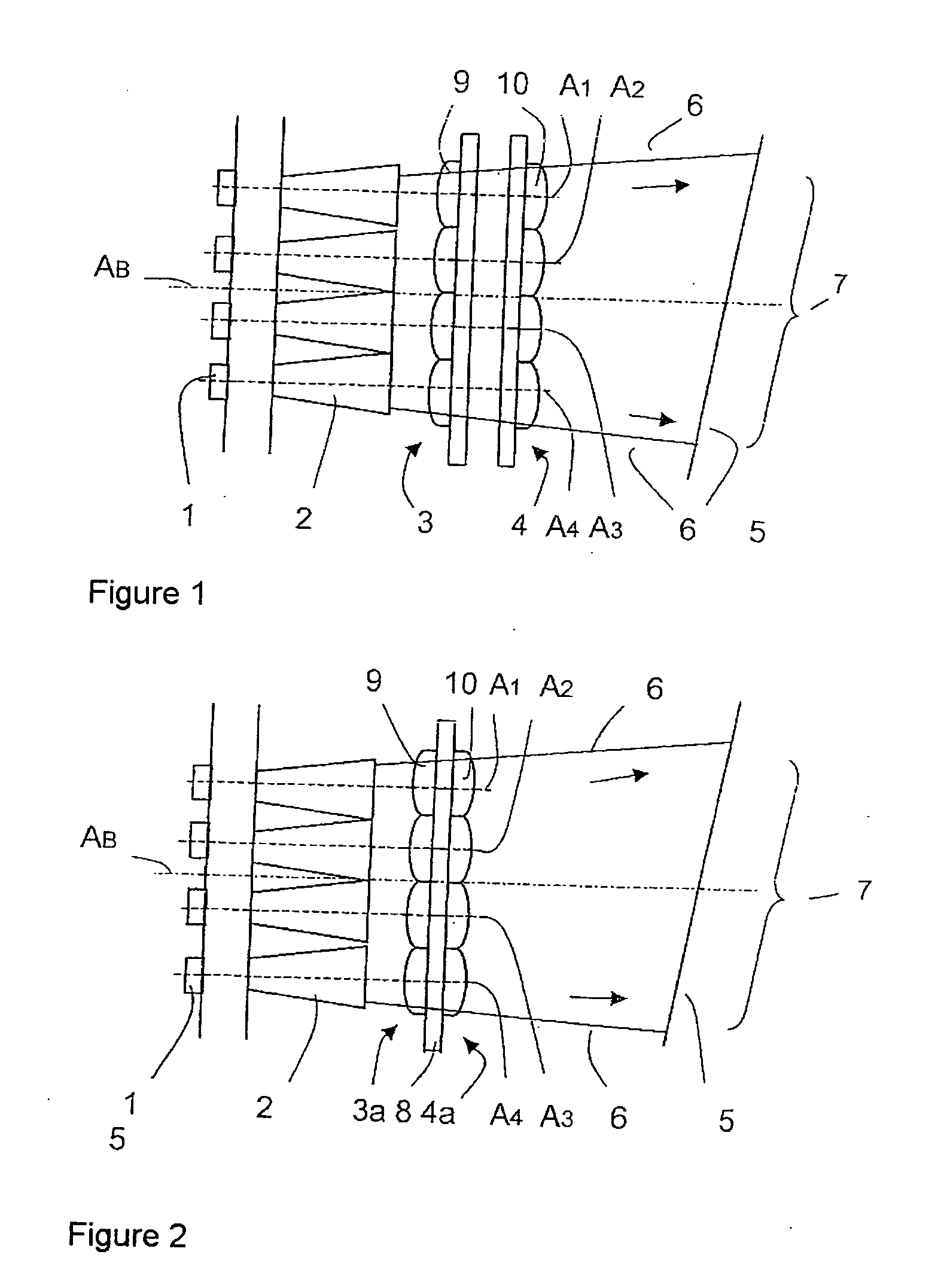Arrangement for the illumination of an image plane
- Summary
- Abstract
- Description
- Claims
- Application Information
AI Technical Summary
Benefits of technology
Problems solved by technology
Method used
Image
Examples
Embodiment Construction
[0045]FIG. 1 is a schematic view of the arrangement according to the invention with illumination optics 1 comprising an LED array, an integrator array 2, two microlens arrays 3 and 4, and an image-generating element 5.
[0046] The light emitted by the individual LEDs of the illumination optics 1 first reaches the associated integrators of the integrator array 2. Through the multiple reflections in the integrators, the light components are homogenized when passing through the integrator array 2 and the light outlet surfaces are illuminated homogeneously. Due to the arrangement of the microlens arrays 3 and 4 downstream, these microlens arrays 3 and 4 comprising two identically constructed, regular arrangements of identical lenses with raised surfaces, which arrangements are parallel to one another and mirror-inverted with respect to one another, the optical axes A1, A2, A3 and A4 of the lenses extending parallel to the optical axis AB of the illumination optics 1, the areas of the rad...
PUM
 Login to View More
Login to View More Abstract
Description
Claims
Application Information
 Login to View More
Login to View More - R&D
- Intellectual Property
- Life Sciences
- Materials
- Tech Scout
- Unparalleled Data Quality
- Higher Quality Content
- 60% Fewer Hallucinations
Browse by: Latest US Patents, China's latest patents, Technical Efficacy Thesaurus, Application Domain, Technology Topic, Popular Technical Reports.
© 2025 PatSnap. All rights reserved.Legal|Privacy policy|Modern Slavery Act Transparency Statement|Sitemap|About US| Contact US: help@patsnap.com



